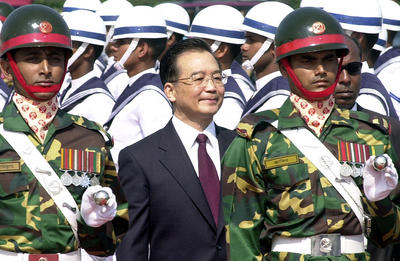This slowing down of economic relations between India and Bangladesh, coupled with strained and uncertain political relations, is a cause for concern. Recent visits to Bangladesh by S M Krishna, India’s External Affairs Minister, and Sonia Gandhi, President of the Indian National Congress, have laid the groundwork for Indian Prime Minister Manmohan Singh’s visit scheduled for September 6-7. This opportunity should be utilized to address some of the key issues that affect bilateral economic relations.
Indian exports to Bangladesh have registered a continuous decline. In 1991 India’s exports as a percentage of China’s exports to Bangladesh were more than 150 per cent, but by the end of 2010 they had decreased to 30 per cent. Given the similarity in the export baskets of China and India to Bangladesh, Chinese exports are seen to be replacing Indian exports. China also imports less than India from Bangladesh, resulting in a higher trade balance in favour of China. Even India’s concessions to Bangladesh under the Asia Pacific Trade Agreement (APTA), the South Asia Free Trade Agreement (SAFTA), and the recently-declared zero tariff on all products other than the Sensitive List to all least developed countries (LDCs) in SAFTA have failed to improve the trade relations between the two nations.
China has captured Bangladesh’s market in industries such as textiles, footwear and head wear, and machinery and mechanical appliances, where India also enjoys comparative advantage. Though Chinese products in these industries are highly competitive on price, there are many other economic and non-economic factors responsible for turning the table in favour of China.
Bangladeshi traders and industry bodies have claimed they face high non-tariff barriers such as delays, bureaucratic harassment, limited transport routes, customs harassment and visa problems in trading with India, which increases the cost of doing business and fosters a lack of trust. These non-tariff barriers are are exacerbated by corruption at the border, a rigid Indian bureaucracy, excessive concerns over security and a lack of infrastructure.
Infrastructure connectivity in terms of sea trade from China is more efficient and takes less time than importing from India. All the ports are closed to trade with India and the roads at Benepole and Petrapole are in bad condition.
Unlike India, China has been very proactive in the Bangladeshi market. Apart from the price competitiveness of Chinese products, the welcoming attitude of Chinese traders and officials at customs is encouraging to Bangladeshi traders. Visas are never a problem in Chinese cases (unlike obtaining Indian visas) and China invites Bangladeshi enterprises to participate in exhibitions in order to obtain better information about Chinese products. Chinese exporters are even ready to redesign branded products at the request of Bangladeshi importers to cater to the price-sensitive local market. Further, Chinese businesses show a lot of interest in taking care of logistics and trade difficulties and consistently follow up complaints. In most industries China is ready for technology transfers whereas Indian industries are often not.
Since trade and investment go hand in hand, India is not just losing its grip over trade ties but also has a negligible investment presence in Bangladesh. Though Bangladesh does not discourage Indian investments, there is mutual mistrust partly because of the Indian ban on Bangladeshi investment in India until 2007. India lifted the ban and allowed Bangladeshi foreign direct investment in expectation of mutual openness and to ease Indian investment in major deals such as the Tata and Essar projects. To remedy the situation the Bilateral Investment Promotion and Protection Agreement was signed between India and Bangladesh in February 2009, but still substantial capital flows have not come in.
Like India, China’s investment in Bangladesh is also low, but it is giving development assistance and project loans, which fosters goodwill. China has constructed six ‘friendship’ bridges and the Bangladesh-China Friendship Conference Centre in Bangladesh. China is looking for natural gas reserves in Bangladesh and has been offered exploration rights at Barakpuria by Dhaka. Also, China has gained naval access to Bangladesh’s Chittagong port, which India has been eyeing for several years. The two countries are also cooperating on the Bangladesh-Myanmar-China road link through Kunming to further increase economic cooperation. In contrast, India–Bangladesh collaboration in gas exploration in Bangladesh and in Myanmar has failed. Though the Indian government regularly transfers assistance to Bangladesh in the form of grants, loans and transport assistance, this assistance is substantially lower than that offered by China.
Given India’s slowdown in exports to Bangladesh, even in industries where India used to dominate, there is a pressing need to reduce non-tariff barriers. In addition, there is a need to revisit tariff concessions and analyse why trade between India and Bangladesh has deteriorated. India needs to address issues related to transit and invest in road and railway infrastructure at the border to allow for smooth traffic movement between the two countries. India must endeavour to improve investment, technology transfer, long term business and goodwill with Bangladesh through project financing and soft loans. Improved economic relations would certainly help in establishing lasting political relations, helping facilitate peace in the region.
Pravakar Sahoo is Associate Professor at the Institute of Economic Growth, Delhi.
An earlier version of this article was published in The Hindu Business Line.

